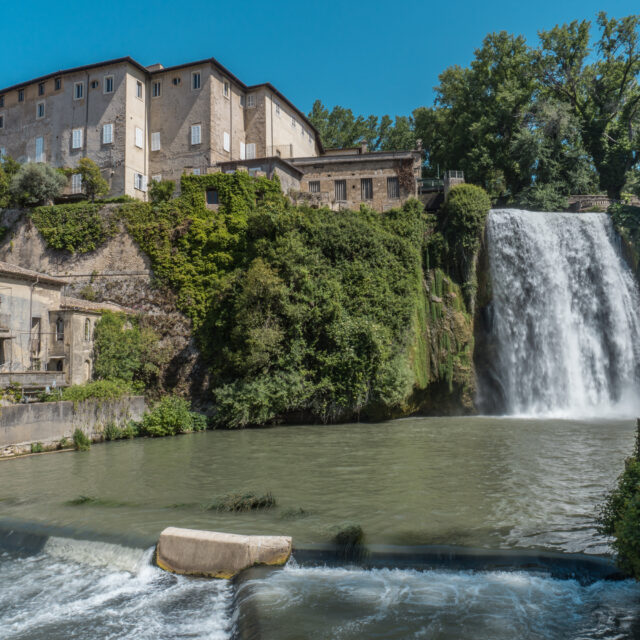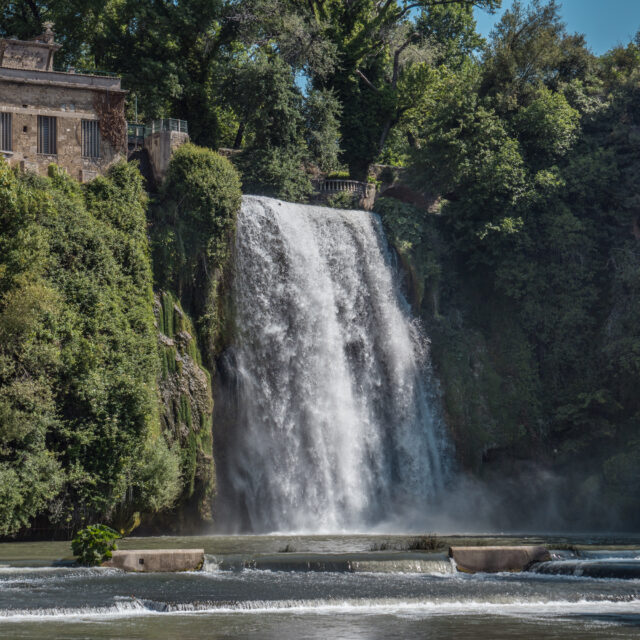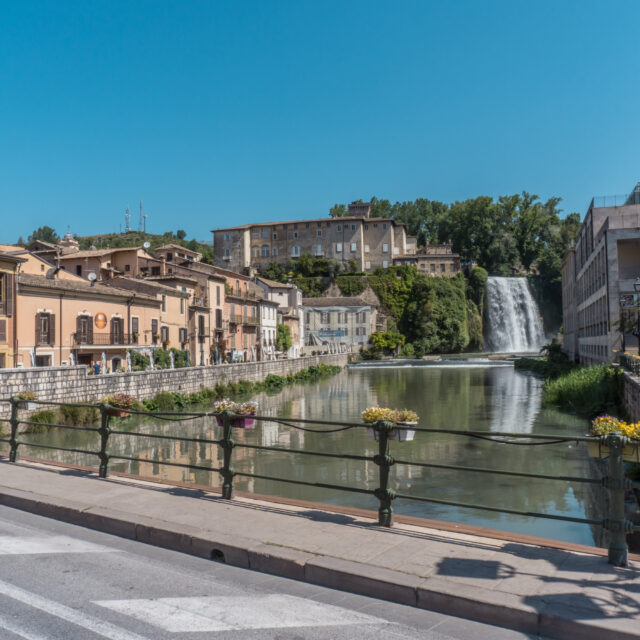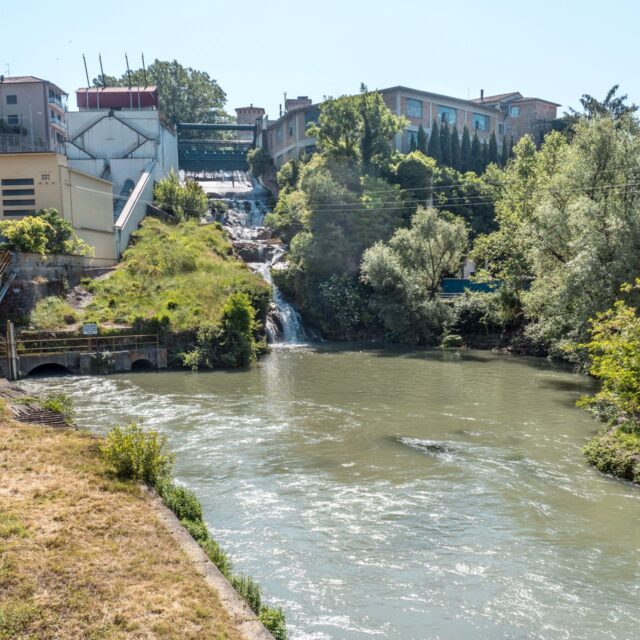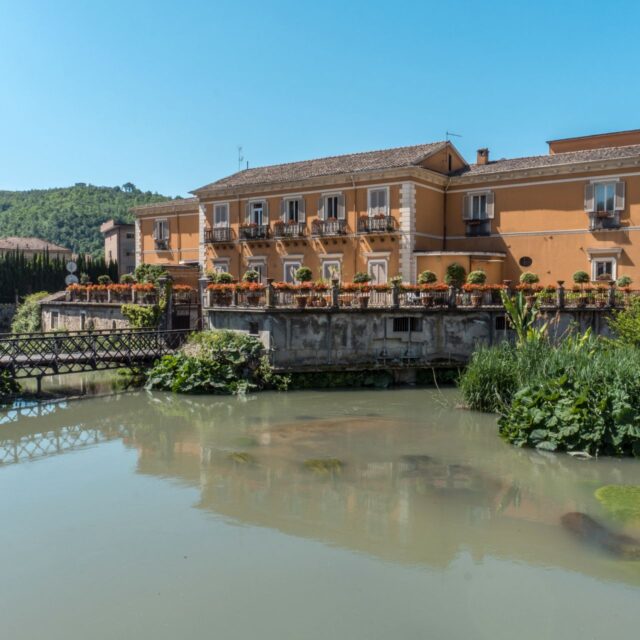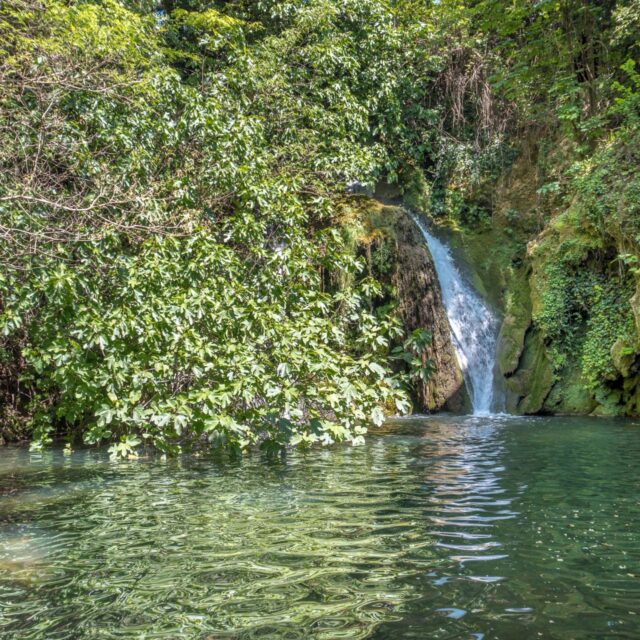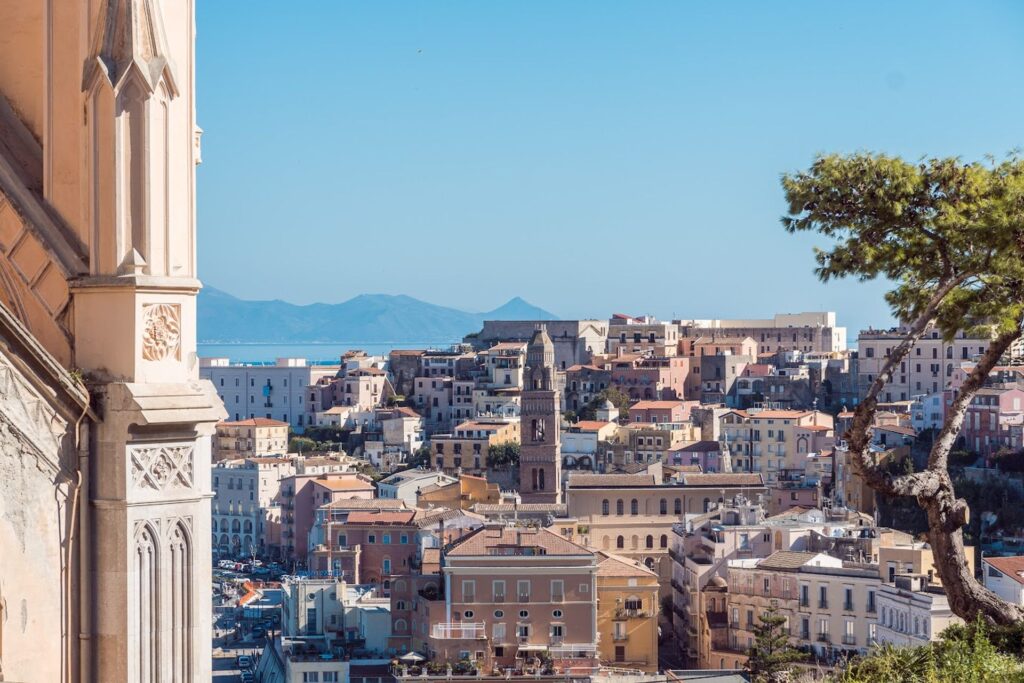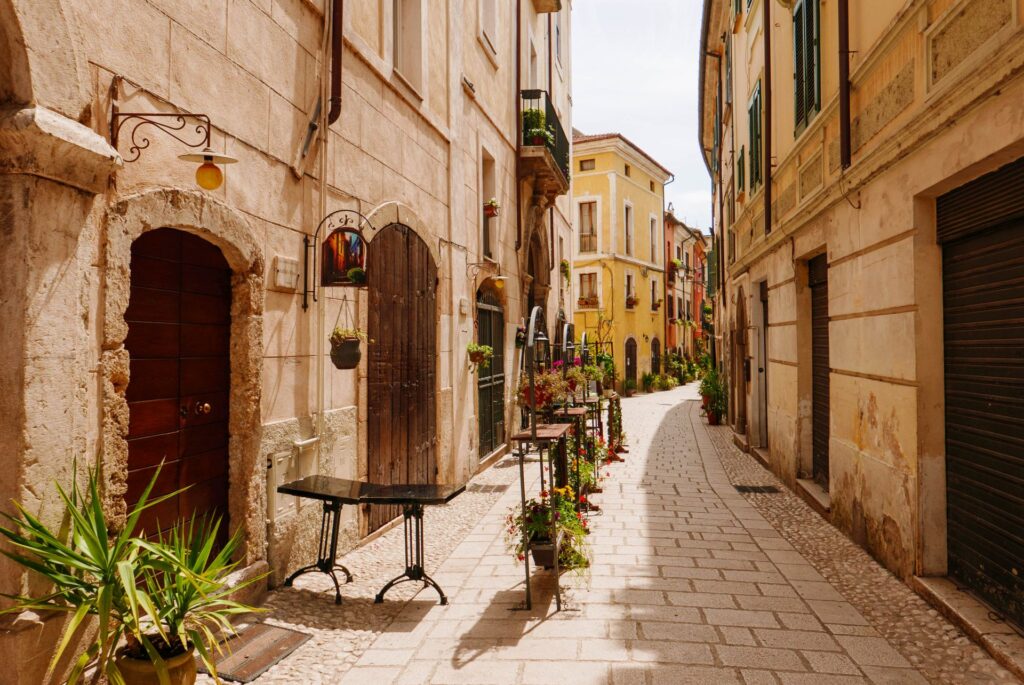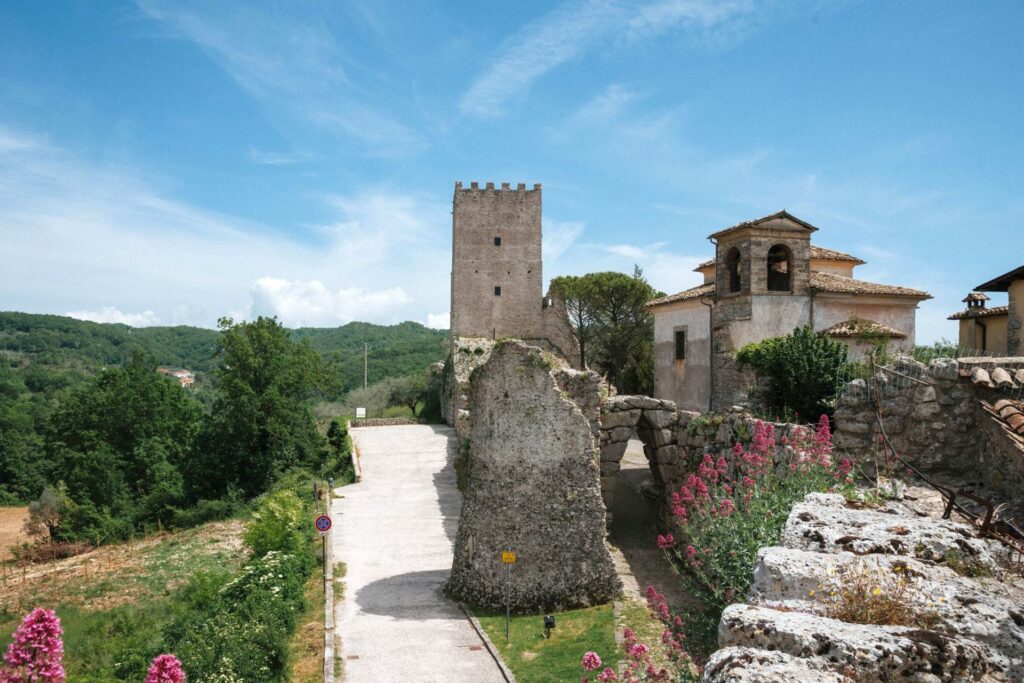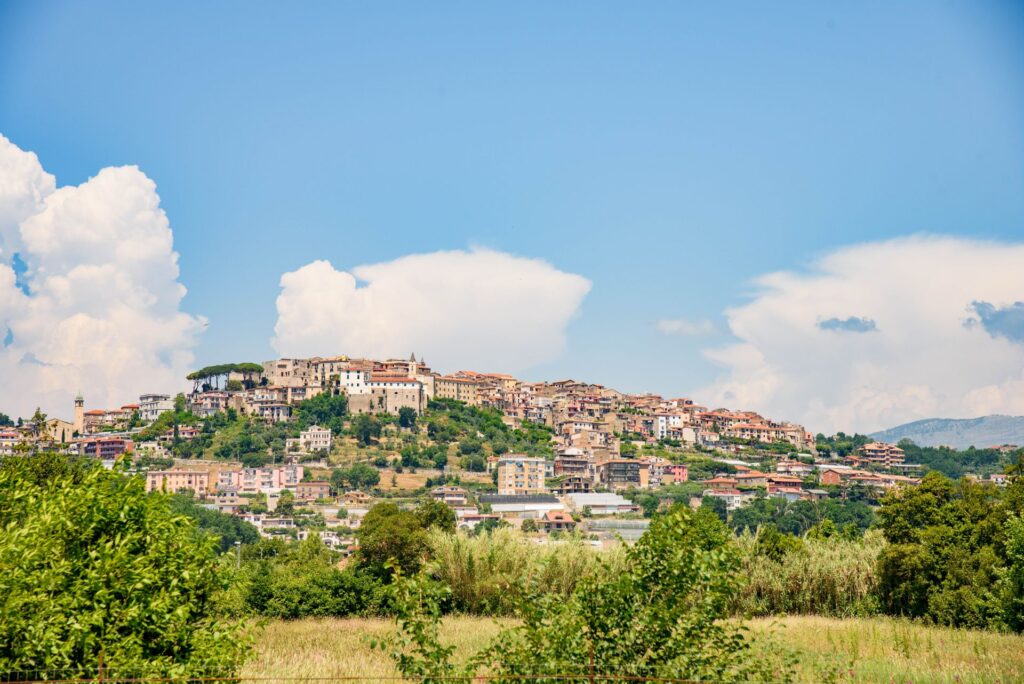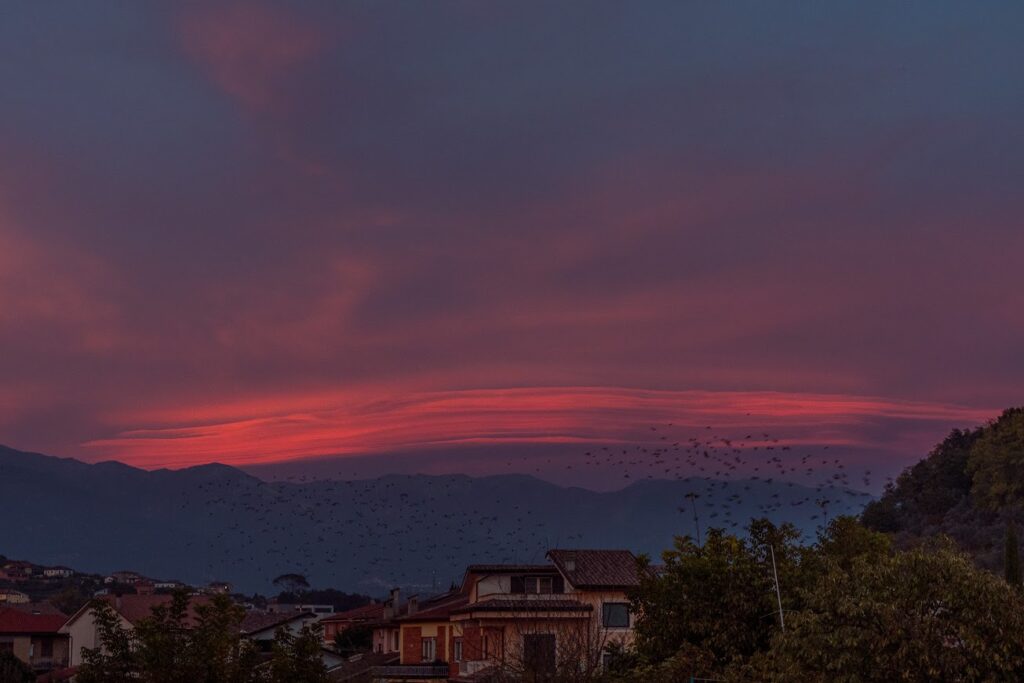Villages
Isola del Liri
Isola del Liri – Old Town
The oldest name of the town was Insula Filiorum Petri (‘Island of the sons of Peter’). After the Unification of Italy, it became Isola di Sora in 1863, before receiving its current name in 1869. In Roman times, its territory was divided between the municipalities of Sora and Arpinum. It was part of the Isola family feud from the 12th century to the 14th century. It passed to the Celano family, then to the Cantelmo di Alvito family, then to the Della Rovere family until 1580, when Giacomo Boncompagni acquired the entire Duchy of Sora. The Boncompagni family encouraged the processing of wool ‘alla fiorentina’, even though by the early 16th century there were paper mills, gualchiere and perhaps an ironworks, which exploited water.
On 4 May 1799 over five hundred people, who had taken refuge in the Church of San Lorenzo Martire, were slaughtered by the French army.
The following French occupation however brought great industrial development: some families such as the Beranger, followed by the Lefevre, Lambert, Courrier and Boimond took over the local paper mills. Isola del Liri from a small rural village became a very important industrial centre for papermaking. In the same period, the manufacture of felts for paper mills also developed in Isola del Liri, thanks to the presence of numerous wool mills.
The presence of hydroelectric power plants was very important for the development of industry: at the beginning of the 20th century, Isola del Liri was one of the few centres to have electricity for public and private use. The earthquake of January 1915 and the First World War partly slowed down the town’s industrial development. During the Second World War, the town was heavily damaged by Allied bombing and German mines. Many factories were also destroyed. After the war, the economy of Isola del Liri slowly regained strength and the local industry started a slow decline.
The old town is developed on an island formed by the two arms of the Liri river, which separate at the height of the Boncompagni-Viscogliosi castle, creating the Cascata Grande and the Cascata del Valcatoio. The Cascata Grande falls with a vertical drop of about 27 metres and is formed by the left arm of the Liri. It is among the few waterfalls to be found in the historic centre of a city, the only example in Italy and Europe.
The Valcatoio Waterfall, formed by the right arm, is less spectacular than the first because its waters are partly captured to feed a hydroelectric power station and it descends along an inclined plane of about 160 metres, with a drop of about 27 metres.
The Boncompagni – Viscogliosi Castle, built on the site of a medieval tower, is now a national monument. It stands on a travertine bank, overlooking the historic centre, which bars the course of the Liri river, dividing it into two arms. Between the 19th and 20th centuries, the castle structure was adapted to house a wool mill and for the construction of a hydroelectric power station.
The construction of the Church of San Lorenzo martire was begun around 1630, when the Boncompagni family transferred the church from the park at the foot of the castle, destroying many previous buildings. On the 18th-century façade are the large niches housing the statues of St Peter and St Paul and above them an electronic clock and a sundial.
The former Pisani Felt Factory stands in front of the Cascata Grande and has an impressive panoramic terrace, accessible from the Galleria Eustachio Pisani, which often hosts art and photography exhibitions.
Among the examples of industrial archaeology in Isola del Liri is the Mancini-Courrier paper mill, built on a small island opposite the Cascata Grande together with the main house.
The complex known as the Lefevre Paper Mill consists of a small neo-Gothic chapel and the remains of an industrial plant on five levels overlooking the stream below, known as Magnene. Inside, carefully restored machinery can be admired. The nearby Fibreno Paper Mill was built by Carlo Antonio Beranger on the site of the former Carmelite convent of Santa Maria delle Forme.
In the Boimond Paper Mill, one of the most important industries in Isola del Liri, the paper machine is still preserved.
Villa Nota Pisani is also known as Villa Lefebvre, from the name of the family that lived there during the 19th century and until the early 20th century. It was built by the Frenchman Carlo Lefebvre, a paper industrialist who had come to Italy following Napoleon Bonaparte during the Italian Campaign. The villa, listed among the Historic Houses of the Lazio Region, has an eclectic style and is surrounded by a park with fountains and tall trees. The interiors are decorated with frescoes, trompe l’oeil and papier paint. Among its most illustrious guests is Ferdinand II of Bourbon.

